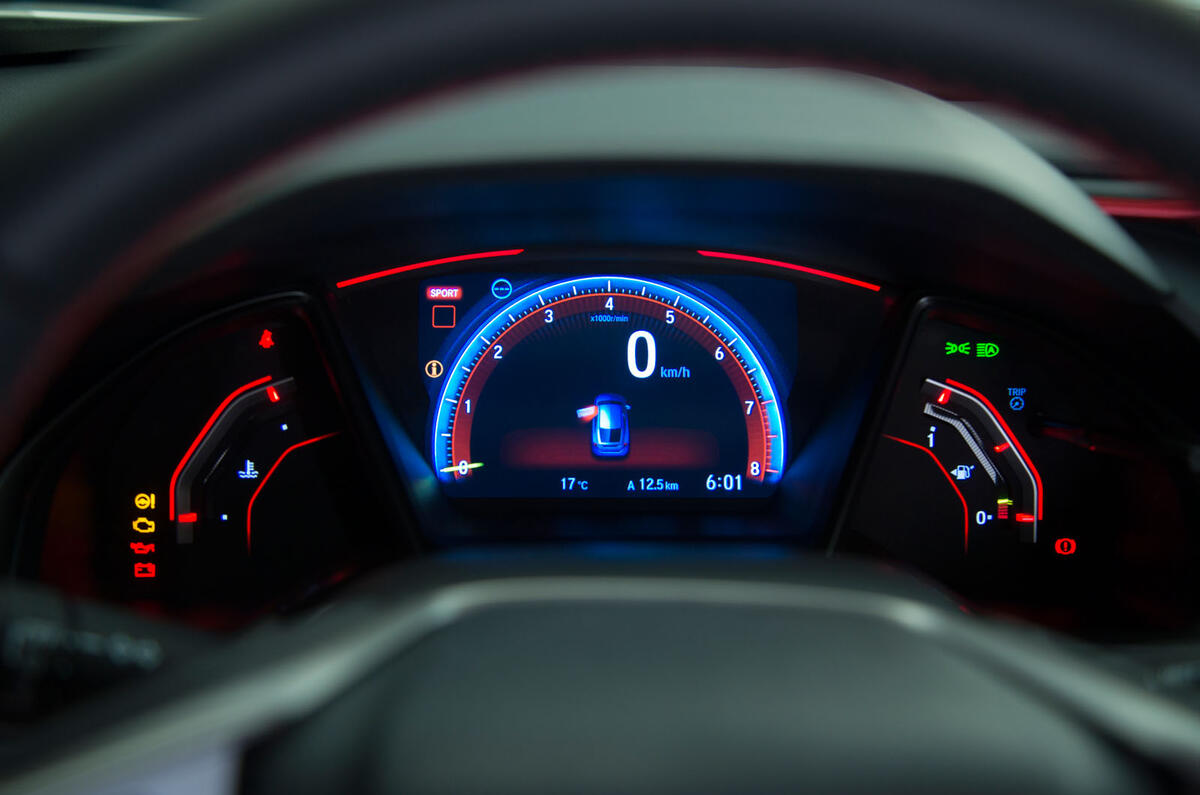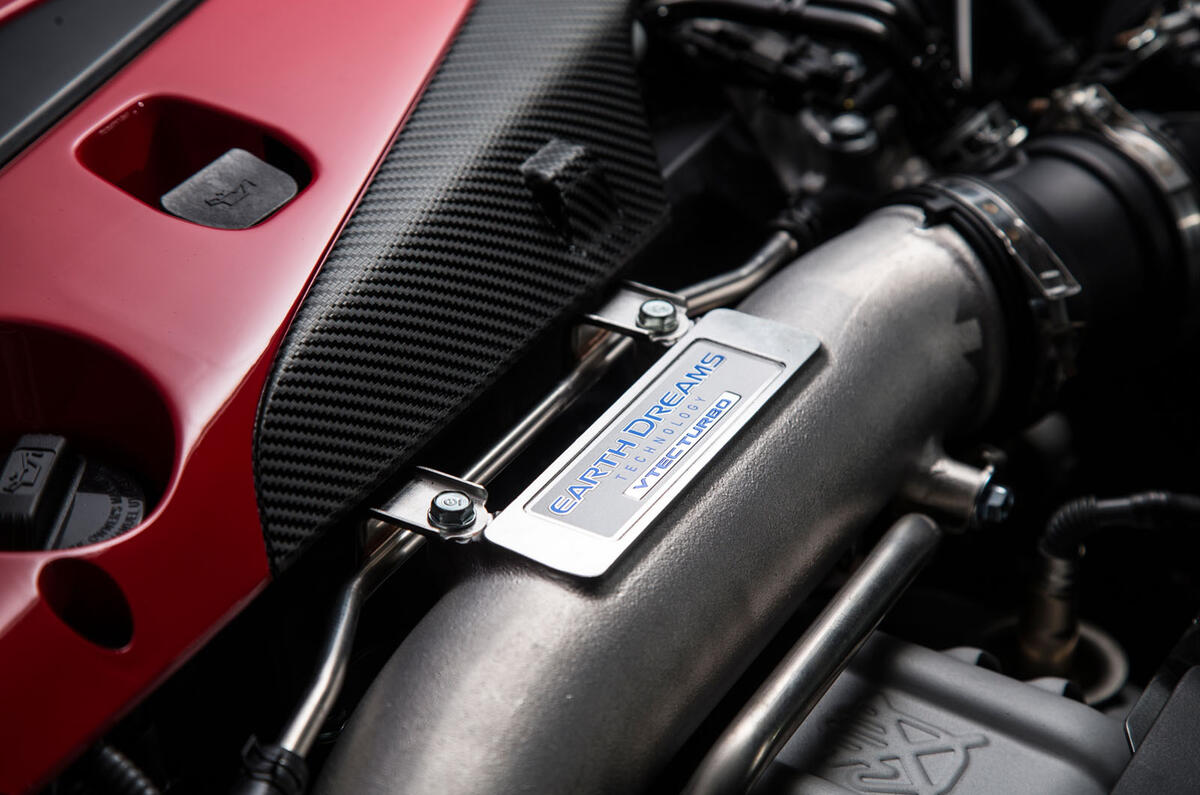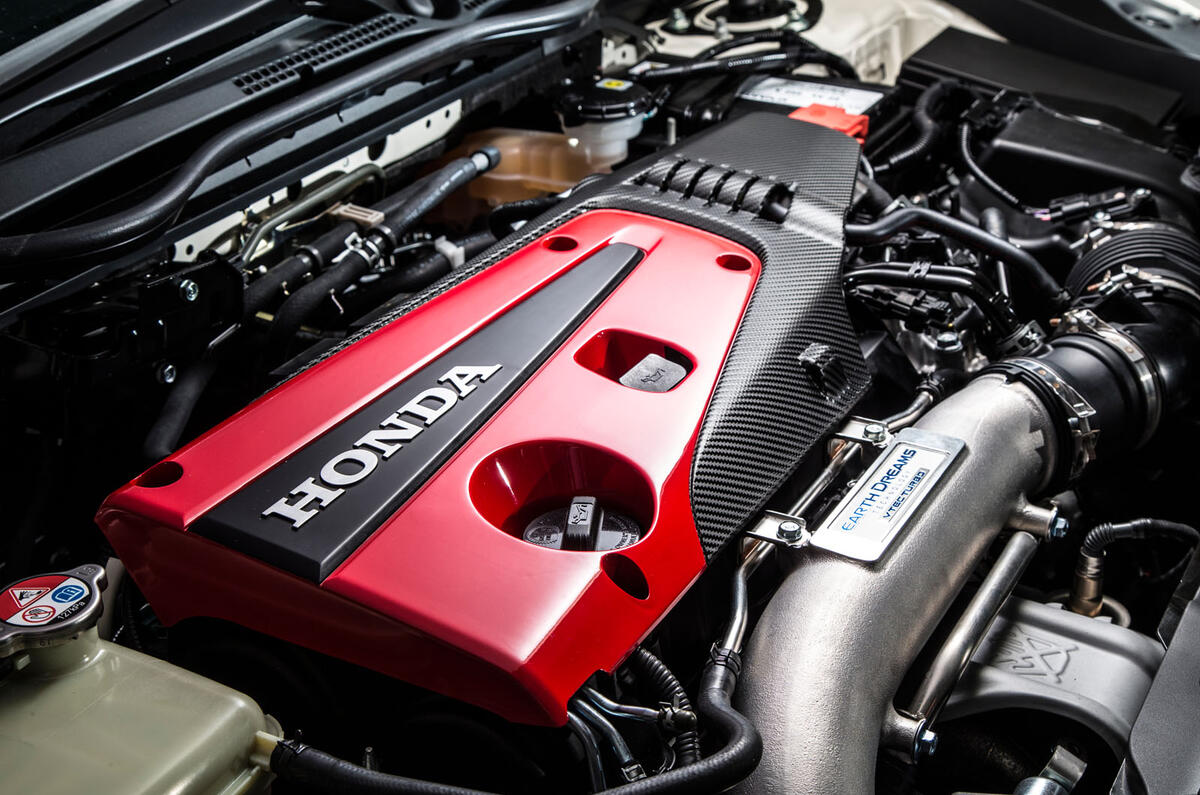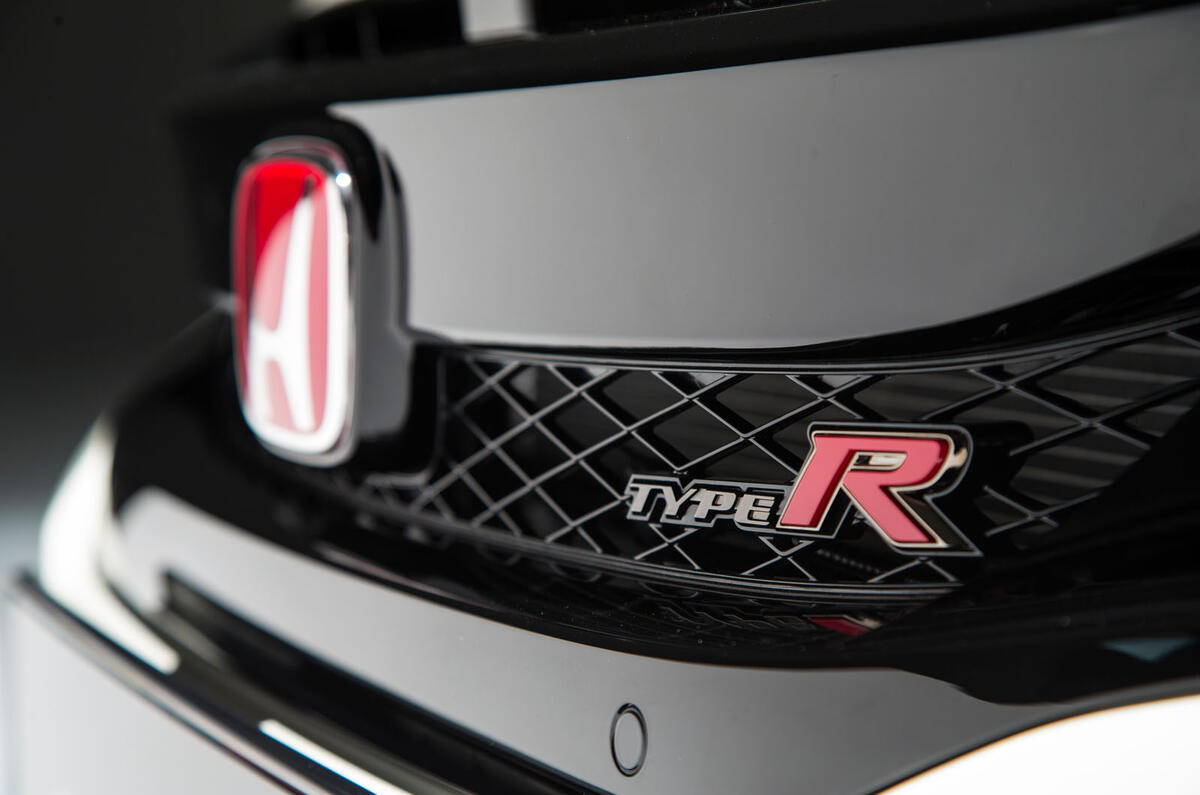The 2017 Honda Civic Type R will cost from £30,995 when it hits Honda forecourts this July.
The current front-drive Nurburgring lap record holder is also announced to cost from £299 a month on a three-year, 5.9% PCP deal. The GT version will cost £32,995 outright, and comes with a host of extras, including an upgraded sound system, LED front fog lights and Honda’s Connect system with sat-nav.
We've driven the new Honda Civic Type R - read the review here
PCP pricing for the GT will be confirmed upon launch, but Honda expects the sales split between Type R and Type R GT to be heavily in favour of the GT - 75% of Civic Type Rs bought in the UK will be GT-badged. The higher-spec model gets improved equipment over the standard car including blind Spot Information, dual-zone climate control, LED front fog lights, an improved stereo system and Garmin sat-nav.
Honda confirmed that pre-orders were received before the car was available to order, but didn't go so far as to reveal how many. Honda did say, however, that US customers will most likely get their hands on new Civic Type Rs first, as it's a larger market than the UK. It'll be the first time a Honda Type R car has been officially marketed in the US. First delivery dates are yet to be confirmed.
2017 Honda Civic Type R revealed
The new Honda Civic Type R hot hatch will strike the perfect balance between performance and comfort, according to project boss Hideki Kakinuma.
Talking about the all-new, tenth-generation Honda Civic-based hot hatch, Kakinuma said: “We are trying to balance two aspects. Some rivals focus on extreme performance and others are going in the comfort direction. We want to go right in the middle.”
The current Type R has been criticised for being too performance-focused, so this move is an acknowledgement that a more middle-of-the-road approach is needed in order to attract a broader audience, not least in the US, where the Type R will be sold for the first time.
Despite this intention, Kakinuma also confirmed that the new Type R will make an attempt on the Nürburgring Nordschleife front-wheel-drive lap record this spring.
A pre-production version of the previous-generation model held the Nürburgring record of 7min 49.21sec until last May, when Volkswagen ’s Golf GTI Clubsport S recorded a lap time 1.4sec faster. Honda subsequently responded by setting new front-wheel-drive lap records at five European racing circuits.
2017 Honda Civic Type R specs
The new Civic Type R features a revised version of the turbocharged 2.0-litre VTEC petrol engine used by the outgoing model. The flow rate of the exhaust gases has been increased and the ECU’s mapping has been updated which, Honda claims, improves throttle response and driveability at peak. Torque remains the same, with 295lb ft from 2500rpm to 4500rpm, but peak power is up by 10bhp to 316bhp at 6500rpm.
Despite the upped power, Honda claims improved fuel economy for the new model, of 36.7mpg with 176g/km CO2; that's 20% more fuel efficient than before, but a 6g/km rise in CO2 emissions.
Kakinuma said the car’s kerb weight is “just about the same” as the existing Type R’s 1382kg. The new model’s 0-62mph time also matches the current car’s time of 5.7secs, while the car's top speed stands at 169mph.
The Type R also retains the six-speed manual gearbox of the current car. Kakinuma said: “We want to offer customers the joy of shifting for themselves.” It also introduces a new rev-match control system which promises to give smoother gearshifts and negates heel-and-toe driving.
The outgoing Type R required the standard Civic’s platform to be significantly re-engineered, so the model launched a long time after the regular hatchback. However, for this generation, the Civic platform was designed for the Type R from the beginning.
The new model is longer, lower and wider than before, with a centre of gravity that is 34mm lower and a 50mm lower driver’s hip point, while further use of adhesive in the standard Civic bodyshell has increased torsional rigidity by 39% compared with the previous Type R, Honda claims.
The MacPherson strut suspension of the standard model has also been revised, with new geometry intended to minimise torque steer and improve handling. It also uses the same multi-link rear axle as the regular Civic but adds high-rigidity suspension arms. There's also a set of adaptive dampers improved for the new model, with three-chamber designed shock absorbers to add to the car's more comfortable approach than its predecessor.
Aerodynamics are also improved thanks to a smoother underbody, a front air curtain, a lightweight rear wing and vortex generators along the roofline. Honda claims the result is a best-in-class balance between lift and drag, with a 3% improvement in drag coefficient. Honda claims that the car's frame is 37% stiffer and 16kg lighter than before, too.
In a bid to offer a more comfortable ride than before, the Type R will have three driving modes: Comfort, default Sport and, for the track, R. Kakinuma described the Comfort mode as being “in line with the standard model”, while R is “a bit harder” than before. “We’ve extended the spectrum of the modes,” he added. “The previous Type R was only sold in the EU and Japan. In order to appeal to a broader range of customers, such as the US, we added the Comfort mode.”
Despite targeting American buyers, growing in size and developing some new refined character facets, the new Honda Civic Type R hasn’t gone soft, according to Honda’s UK-based New Model Centre Division Manager Phil Haydon, who has been closely involved with productionising the new car at Honda’s Swindon factory, and has been driving a prototype version for extended periods of the last year.
“The new ‘comfort’ driving mode certainly makes the ride more civil, and we’ve made significant improvements to refinement in the car,” confirms Haydon, “but in ‘R+’ mode I’d say the new car’s even firmer-riding and more exciting than before.”
“We have a more rigid body, wider axle tracks, wider tyres and a lower centre of gravity in play. While the last Type R probably made a bigger impact because of the increase in power and the switch to turbocharging, this one is probably the greater engineering achievement,” he went on. “It’s still our idea of the ultimate front-wheel drive hot hatchback, despite the added breadth of ability.” The tyres are specially-developed 245/30 R20 Continental pieces.
The car's brakes are larger than before; 350mm for the drilled front discs and 305mm for the solid rear discs represent growth of 9mm over the car's predecessor.
Kakinuma also said work had been done to improve the exhaust note. “A key weakness [on the former model] was a booming sound,” he said. “ We’ve paid attention to that aspect and improved it, especially at low and mid-speed range. We tuned the sound and it’s all natural.” In the car's intriguing three-pipe exhaust setup, the two outer pipes handle exhaust flow, while the centre pipe is in control of the engine note.
Honda Civic Type R project boss Hideki Kakinuma on the all-new hot hatch
Honda Civic Type R: will it be good to drive?
Stay up to date with the latest from the Geneva motor show here
Geneva motor show - the 14 cars you must see



















































Join the debate
Add your comment
£299 per month
And since fuel consumption and CO2 are directly related to each other, the same percentage figures MUST apply to both ie a 10% reduction in fuel consumed would yield a 10% reduction in CO2. So one of Honda's figures is wrong!
As someone who likes 'modern'
Weird logic
Honda has some wierd logic here; the fuel economy has dropped by 2 mpg and CO2 emissions are up by 6 g/km and they still claim that the new car is a whopping 20 % more efficient (old model did 38.7 mpg and emitted 170 g/km). Bull shit, it's clearly LESS efficient!
Rachel, stop believing all the BS the car manufacturers feed you and start thinking on your own. If a random reader like me can spot the BS, so should you. You're a professional car journalist, for Crist's sake.
One way to explain the discrepancy
WLTP vs. NEDC
It could be also that Honda had to remove their "cheat devices" because the testers know how to look for them now..
Finally a request to Autocar: during this transition period, could you please disclose to which test cycle the fuel consumption and emission figures you report are based on.